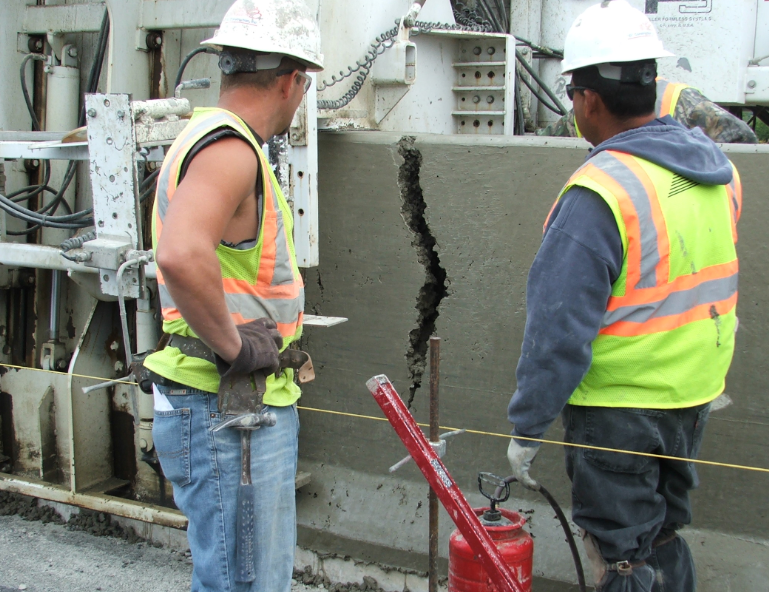The use of
manufactured sand in concrete production is very common - As our industry continues to move more towards environmentally friendly, recycled material sources, we as civil & materials engineers will need to continue to stay vigilant in testing the boundaries that new or recycled materials present.
With concrete, trial batch testing must always be carried out.
Natural sands are used in concrete.
Manufactured sands are used in concrete. Concrete mix design is both a science and and art that requires a great deal of practical and lab experience.
A word of caution: Sand properties will affect mix performance. Several years ago, one of our projects constructed slipformed concrete barrier along the median of an expressway. For weeks, we suffered with concrete that, for lack of a better term, was "ripping" as it was extruded from the machine.



The Contractor, the concrete supplier, our engineering crew as well as the Transportation Department searched for the causation of the problem for several weeks. Was it the machine? Was it the internal concrete vibration? Was it the speed the machine was placing the concrete? Was it the mix design? Some very intelligent engineering minds worked to solve the problem but to no avail. Adjustments were being tried day after day - Slump, air, machine speed, concrete admixtures - No one involved with the project had experienced anything like this before and we could not seem to find the solution....
After weeks of trying to make adjustments with some minimal positive effects, the concrete supplier tried changing the
manufactured sand they were using to a
natural sand: Guess what - Problem Solved!! We hypothesized that, on a micro-level, the particular cement & fly ash being used combined with the angularity of the
manufactured sand being sourced were not providing the same type of water/cement interface as the
natural sand and was causing the concrete mass to, essential, lose its internal stability. It was an ordeal that I hope to never have to experience again....
Lesson Learned - Never assume you have all the answers, particularly when it comes to material properties, as they can be inherently variable. As engineers, it is our job to always test our assumptions. Never be afraid to put your proposed concrete mixes through their paces, run tests, analyze the results and confirm that the material you plan to use will provide you with the performance criteria you desire.